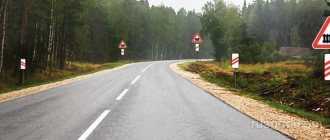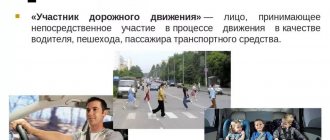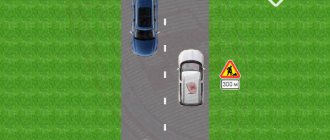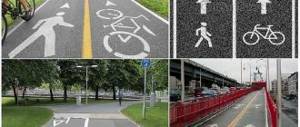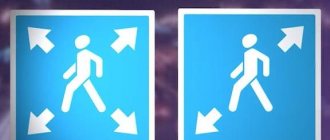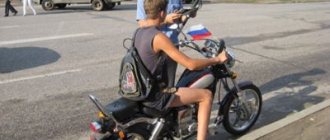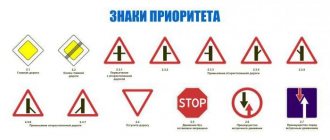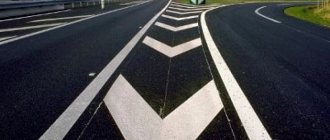About a month ago, the Government of the country decided to amend the Traffic Rules in order to bring them closer to international standards. Thus, traffic rules 2021 have become new, or rather improved. Among the main innovations are vehicle identification marks. Now they must be located on certain machines. For example, the presence of the novice driver sign on mopeds is no longer required. For failure to comply with the new rules, certain types of penalties will be applied to car drivers. These will take the form of monetary compensation in the form of fines. Also among the innovations is the ability to drive a motorcycle at a speed of 110 km/h and new restrictions for those who only recently decided to get behind the wheel of a car.
Definition
Before moving on to a detailed examination of each graphic image, it is necessary to understand what vehicle identification marks actually are. To do this, let's turn to the Technical Translator's Handbook.
To put it as briefly as possible and without using abstruse terminological words that are understandable only to specialists in a certain field of activity, identification marks are graphic images that inform about the functional purpose of the vehicle or its departmental affiliation. We think we've sorted this out. Let's move on to consider the identification marks themselves.
“Beginner Driver” sign
As for the “Beginner Driver” identification mark, its presence is not mandatory when it comes to driving a moped. It appears in the shape of a square on a yellow background, the side of which is 150 mm. It has an image in the form of a black exclamation mark, the height of which is 110 mm. It is drawn against the background of mechanical vehicles (this does not include tractors, self-propelled vehicles, motorcycles and mopeds). Naturally, this sign is not required if the car is driven by a person with at least 2 years of driving experience.
TCB
VV (Training Vehicle) is a sign that is installed on the front and rear of vehicles designed to teach people how to drive. It is a white triangle with equal sides, which is surrounded by a red border around the edges. Inside the triangle is a large letter U in black. They are attached not only to the windshield and rear windows (this applies to stickers), but also placed on the roof of the car, where this symbol can be seen on both sides.
Identification marks, the installation of which is mandatory on vehicles
According to the new rules, the use of cars that do not have mandatory identification marks is completely prohibited. According to this provision, the following rules must be followed:
- on trucks and tractors (class 1.4 t and above) with trailers, as well as on buses and trolleybuses with several compartments, a plate with the inscription “Road Train” is installed, having the shape of 3 lights in orange color design (they are placed on the roof of the driver’s cabin in a horizontal position at a distance of 150 to 300 mm relative to each other;
- on the back of cars equipped with studded tires there is a “Spikes” sign, which has a triangular shape in white with a red rim in which the letter “W” is written in black;
- for vehicles carrying children, a yellow square sign with a red rim is installed, on which “Transportation of children” is written in black;
- A “Deaf Driver” sign must be placed on the front and rear of vehicles driven by people with hearing and speech impairments;
- the designation “Training vehicle” is located on cars used for driving lessons;
- The “speed limit” is placed on the rear left side of the body on vehicles transporting children or transporting large, heavy and dangerous goods.
The corresponding signs must contain special designations that characterize the dangerous properties of the cargo being transported. For example, this could be an identification sign “Slow-moving vehicle”, which should be placed on the rear side of motor vehicles with a maximum speed set by the manufacturer of no more than 30 km/h.
If we are talking about vehicles with long loads or road trains, then they must have a “Long Vehicle” sign on them. If such a sign cannot be placed due to its dimensions, then it is permitted to use two similar plates of the same dimensions (at least 600 x 200 mm), which must be installed symmetrically to the axis of the vehicle.
But perhaps the most significant rule is that newcomers were required not only to study all vehicle identification marks, but also not to forget that they needed a “Beginner Driver” sign, which is installed on the back of the car. Novice drivers include all drivers with up to 2 years of driving experience. Therefore, if your driver’s license has the date 2015, you definitely need to hang this sign so as not to get a fine.
TAXI sign
Taxi identification marks are a very interesting topic that is also worth paying attention to. The most famous taxi symbols are black and white checkers and a bright lantern on the roof. In the countries of the Soviet Union, these signs began to be used for the first time after the war. Thanks to these elements, drivers could stand out on the roads. In those days, checkers and a lantern were a sign that a taxi was official, but now, unfortunately, this has lost its relevance. In the 21st century, the presence of official signs does not guarantee that you will use the services of a legal taxi. The situation is such that many scammers specifically install these symbols on their cars in order to mislead gullible and naive customers. Today, an indicator of the legality of a taxi is not only lights and images of checkers, but also a license, official name and registered telephone number.
There are several versions of how lanterns and black and white checkers became symbols of taxis. The first states that the authors of these attributes are employees of Checker Motors Corporation. Others claim that taxi drivers borrowed checkerboard images from professional racers, since all their races begin and end with checkerboard flags. For the same reason, many taxi drivers call their services high-speed.
Video
What else is worth reading
Warning
Prescriptive
Prohibiting
Information signs
Horizontal markings
Is it possible to overtake a slow-moving vehicle that does not have a special sign?
On dangerous sections of the road, a sign 3.20 “overtaking is prohibited” is installed. The sign has a coverage area and prohibits overtaking any vehicle except:
- horse-drawn carts;
- bicycles (from 2.04.14);
- mopeds;
- two-wheeled motorcycles without a sidecar (trailer);
- low-speed transport;
The Plenum of the Supreme Court of the Russian Federation in 2012 clarifies the effect of sign 3.20 in the case where the sign for a slow-moving vehicle is missing, but the design speed of the overtaken vehicle is not more than 30 km/h. The resolution is difficult to apply in a real traffic situation, since it is impossible to remember all the design features of cars whose rated speed does not exceed 30 kilometers per hour.
This means that in the area covered by the “no overtaking” sign:
- the driver can confidently overtake: bicycles, carts, mopeds, two-wheeled motorcycles;
- It is risky to overtake slow-moving cars that do not have a special sign.
Chapter 5.2 Markings and safety signs
- 5.2.1.1 Unless otherwise provided in ADR, each package must be legibly and durably marked indicating the UN number corresponding to the dangerous goods contained in the package, preceded by the letters "UN". In the case of unpackaged products, the marking is applied to the product itself, its support or its handling device or its storage or launching device.
- must be clearly visible and legible;
- must be able to withstand exposure to all weather conditions without significantly degrading their quality.
5.2.1.2 All packaging markings required by this chapter:
5.2.1.3 The salvage container must, in addition, be affixed with additional marking in the form of the word “EMERGENCY” .
5.2.1.4 On intermediate bulk containers with a capacity of more than 450 liters and large containers, markings must be applied to two opposite sides.
5.2.1.5 Additional provisions for goods of Class 1. When transporting goods of Class 1, the packages must in addition be marked with the proper shipping name as determined in accordance with section 3.1.2. This clearly legible and indelible inscription must be affixed in the official language of the country of origin and, in addition, if this language is not English, French or German, in English, French or German, if in agreements concluded between the countries involved in the transport, not otherwise provided.
5.2.1.6 Additional provisions for goods of Class 2 Reusable receptacles shall be clearly and durably marked with the following information:
- the UN number and proper shipping name of the gas or mixture of gases determined in accordance with section 3.1.2. For gases classified under any N.O.S. entry, in addition to the UN number, only the technical name¹ of the gas . In the case of mixtures, it is necessary to indicate no more than two components that are most responsible for their hazardous properties;
- for compressed gases loaded by mass, and for liquefied gases - the maximum filling mass and the empty mass of the vessel with fittings and accessories available on the vessel at the time of loading, or gross weight;
- date (year) of the next periodic inspection. These inscriptions may either be printed or indicated on a durable plate or tag attached to the container, or applied in a manner that is durable and clearly visible, such as by paint or any other equivalent method.
¹ Instead of the technical name, it is permitted to use one of the following names:
- for UN No. 1078 refrigerant gas, n.o.s.: mixture F1, mixture F2, mixture F3;
- for UN No. 1060 methyl acetylene and propadiene stabilized mixtures: mixture P1, mixture P2;
- for UN No. 1965 hydrocarbon gas mixtures, liquefied, n.o.s.: mixture A or butane, mixture A01 or butane, mixture A02 or butane, mixture A0 or butane, mixture A1, mixture B1, mixture B2, mixture B, mixture C or propane;
- for UN No. 1010 stabilized butadienes: 1,2-butadiene stabilized, 1,3-butadiene stabilized.
NOTE 1: See also subsection 6.2.2.7.
NOTE 2: For single-use receptacles, see 6.2.2.8.
5.2.1.7 Special marking provisions for goods of Class 7
5.2.1.7.1 Each package must be clearly and durably marked on the outside of the container identifying either the shipper, the consignee, or both.
5.2.1.7.2 For each package other than excepted packages, the outside of the packaging must be clearly and durably marked with the UN number preceded by the letters “UN” and the proper shipping name. For excepted packages, only the UN number is required, preceded by the letters "UN".
5.2.1.7.3 Each package with a gross weight of more than 50 kg must have clear and durable markings on the outer surface of the container indicating its permissible gross weight.
5.2.1.7.4 Each package that conforms to:
- design of packaging type PU-1, packaging type PU-2 or packaging type PU-3, must have a clear and durable marking on the outside of the packaging set, reading, respectively: “TYPE PU-1” (TYPE IP-1), “TYPE PU-2" (TYPE IP-2) or "TYPE PU-3" (TYPE IP-3);
- Type A packaging designs must be clearly and durably marked “TYPE A” on the outside of the packaging;
- the design of a Type PU-2 package, a Type PU-3 package or a Type A package must be clearly and durably marked on the outside of the packaging indicating the international vehicle registration code (VRI code)² of the country in which the design was developed, and either the name of the manufacturer, or other identification of the container, as determined by the competent authority of the country in which the design was developed.
² A distinctive sign for vehicles in international traffic, as provided for by the Vienna Convention on Road Traffic (1968).
5.2.1.7.5 Each package that conforms to a design approved by the competent authority must be clearly and durably marked on the outside of the packaging by:
- identification mark established by the competent authority for this design;
- a serial number to individually identify each packaging corresponding to a given design;
- for package design of type B(U) or package type B(M) - the inscription “TYPE B(U)” (TYPE B(U)) or “TYPE B(M)” (TYPE B(M)); And
- for type C packaging design – the inscription “TYPE C”.
5.2.1.7.6 Each package that conforms to a Type B(U), Type B(M) or Type C package design shall be clearly marked on the outside of the outermost receptacle, resistant to fire and water, by embossing, stamping and other methods resistant to fire and water, with the image of the radiation hazard symbol in the form of a trefoil, shown in the figure below.
| The main radiation hazard sign is in the form of a trefoil, which is built around a central circle with a radius X. The minimum permissible size X is 4 mm. |
5.2.1.7.7 Where LSA-I or SCO-I materials are contained in containers or packaging materials and are transported under exclusive use conditions in accordance with the provisions of paragraph 4.1.9.2.3, the outer surface of such containers or packaging materials may be marked with, as appropriate, marking “RADOIACTIVE LSA-I” or “RADOIACTIVE SCO-I”.
5.2.1.7.8 If the international transport of packages involves the need for competent authority approval of the design or transport, and if different types of approval apply in the different countries affected by the transport, then the marking shall be consistent with the certificate of the country in which the design was developed.
5.2.1.8 Special provisions concerning the labeling of substances hazardous to the environment
5.2.1.8.1 Packages containing environmentally hazardous substances meeting the criteria in 2.2.9.1.10 shall bear the durable environmentally hazardous substances mark shown in 5.2.1.8.3, except single packagings and combination packagings with inner packagings containing:
Rules for overtaking a slow-moving vehicle
You are driving along the road and an obstacle appears in front of your car - a slow-moving truck or slow-moving equipment. There are four possible scenarios:
Road markings and signs do not prohibit overtaking, then:
- if there are no other prohibitions from the Russian Traffic Regulations specified in paragraph 11. You can safely perform the overtaking maneuver of any car;
You cannot overtake:
- at intersections (except for the case when you are moving along a main road through an intersection without a traffic light);
- inside tunnels, on bridges and overpasses, on bridges;
- when visibility is limited by a turn or climb;
- before and at railway crossings;
- at pedestrian crossings;
- if there is interference of another kind (the vehicle in front of you turns, goes to overtake, there is no room to return to its lane);
- If there is a solid line, but there is no 3.20 sign, then it is prohibited to overtake any vehicle;
- On the road there are markings prohibiting overtaking and a sign 3.20, and on the car in front of you there is an identification sign “slow-moving vehicle”, then the road markings lose priority, you can overtake a slow-moving vehicle;
- Sign 3.20 prohibits the overtaking maneuver, and there is no special sign on the car interfering with traffic. You cannot overtake (if you are 100% sure that the speed of this vehicle in the passport is no more than 30 km/h, then overtake).
In May 2014, the Code of Administrative Offenses introduced a fine for drivers of slow-moving vehicles and vehicles that transport large or heavy loads.
A fine is imposed for violating clause 11.6 of the traffic rules, which requires drivers of slow-moving vehicles when driving outside populated areas at a speed of no more than 30 km/h:
- change lanes as far to the right as possible when overtaking or getting ahead is difficult;
- stop on the side of the road and let traffic behind him pass, if necessary;
Slow vehicles may fall under clause 11.6:
- vehicles whose speed does not exceed 30 km/h;
- heavily loaded vehicles moving no faster than 30 km/h;
- horse-drawn carts, large-sized agricultural machinery;
- any slow vehicle that takes up a lot of space in the traffic lane;
In the comments to paragraph 11.6, it is recommended that slow-moving vehicles alternate driving on the road with stops on the side of the road to allow accumulated vehicles to pass.
Fine for illegal overtaking and other violations
In 2021, changes were made to the traffic rules. Traffic rules provide for the liability of drivers for illegal overtaking maneuvers, and the liability of drivers of slow-moving vehicles for obstructing the flow of traffic.
Responsibility is provided:
- for the absence of an identification mark on slow-moving vehicles - a fine of 500 rubles or a warning;
- if the driver violated clause 11.6 of the traffic rules and created difficulties for the movement of other vehicles - a fine for a slow-moving vehicle from 1000 to 1500 rubles (Article 12.15 clause 1.1);
- for overtaking on the side of the road - a fine of 1,500 rubles (bicycles and mopeds can use the side of the road);
- for unreasonable overtaking of a vehicle that is not slow-moving in the coverage area of markings (1.1, 1.3, 1.11) or sign 3.20 - a fine of 5,000 rubles or deprivation of a driver’s license for 4 months (Article 12.15 of the Administrative Code);
Drivers of heavy vehicles and heavy special equipment are reluctant to give way to ordinary cars and significantly slow down traffic. Meeting with such a vehicle is annoying, since it is not always possible to overtake without violating the rules.
However, you should be patient, because the risk of losing your driver's license is very high. Amendments to the traffic rules, which came into force in 2021, should affect the behavior of slow-moving vehicles outside populated areas. Those who like to collect a line of cars behind them should be filmed on a DVR and send a statement to the traffic police.
Didn't find the answer to your question? Find out how to solve exactly your problem - call right now: +7 (Moscow) +7 (812) 309-53-42 (St. Petersburg) It's fast and free!
Free online consultation with a car lawyer
Didn't find the answer to your question? Find out how to solve exactly your problem - call right now: +7 (Moscow) +7 (812) 309-53-42 (St. Petersburg) It's fast and free!
